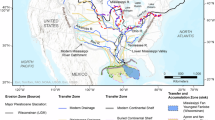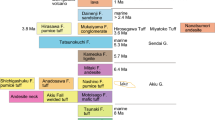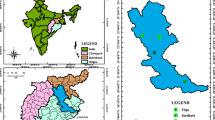Abstract
IN the “Physical Geology and Geography of Great Britain”, Sir A. Ramsay expressed some interesting speculation about the relation formerly existing between the valleys of the Thames and the Severn. According to his view, the Severn Valley was the older, being “one of the oldest in the lowlands of England”. He considered that the secondary strata to the south-east of that river originally drained into it, and that subsequent subsidence altered their inclination to an eastward slope, causing the waters to cut a new channel through the Oolites and Chalk towards the east, the direction in which the Thames flows at present. This view, I believe, has never been favourably entertained by other geologists, owing to the absence of corroborative evidence of such a change in the dip of the beds as Ramsay postulated.
This is a preview of subscription content, access via your institution
Access options
Subscribe to this journal
Receive 51 print issues and online access
$199.00 per year
only $3.90 per issue
Buy this article
- Purchase on SpringerLink
- Instant access to full article PDF
Prices may be subject to local taxes which are calculated during checkout
Similar content being viewed by others
Author information
Authors and Affiliations
Rights and permissions
About this article
Cite this article
MAXWELL, H. The Thames Valley. Nature 88, 278 (1911). https://doi.org/10.1038/088278a0
Issue date:
DOI: https://doi.org/10.1038/088278a0



